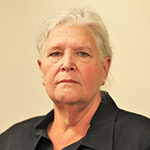UScellular donates $5,000 in toys, supplies to Friendly House
Dave Thompson
After a slow start, a grand vision is coming into focus for redeveloping the large area created on Moline’s riverfront by the new Interstate 74 Bridge and demolition of the old green bridge.
The broad outline of a redevelopment plan for the large, former manufacturing corridor under, in and around the new bridge has been years in the making. The planning process also was slowed by…

Get immediate, unlimited access to all subscriber content and much more.
Learn more in our subscriber FAQ.
Do you want to read and share this article without a paywall?
